In 2010, Peter Muir published his book “Long Lost Blues”, which David Evans qualified as “One of the most important and original books on blues to be published in the past decade” (The Journal of Southern History). Muir is, next to a scholar, also an internationally acclaimed pianist, composer, conductor, and, moreover, the cofounder and codirector of the Institute for Music and Health in Verbank, New York, a nationally recognized center pioneering the use of music for well-being. He strongly beliefs in the fundamental beneficial power of music for health and wellbeing.
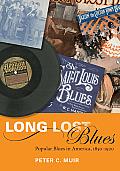 It is thus no surprise that one of the chapters of his book elaborates the theory that the blues can cure the blues. Observing furthermore that the words ‘blue’ and ‘black’ derive ultimately from the same etymological source, namely, the Indo-European root ‘bhel‘, his argumentation leads him even to the mind teasing conclusion that “blues could only be called blues”. Indeed, only the word “blues combines the defining characteristics of the race that created it – the color of its skin – with the anguish, sorrow, pain, and oppression suffered by that race.” The use of the label “blues” for the music which was a response from the African-American populace to the problems posed by the oppressive system of the late nineteenth century, and that provided an proper way of expressing these problems – to say it in the words of J.C. Tracy -, was kind of inevitable. There was simply no other or better choice available as a label.
It is thus no surprise that one of the chapters of his book elaborates the theory that the blues can cure the blues. Observing furthermore that the words ‘blue’ and ‘black’ derive ultimately from the same etymological source, namely, the Indo-European root ‘bhel‘, his argumentation leads him even to the mind teasing conclusion that “blues could only be called blues”. Indeed, only the word “blues combines the defining characteristics of the race that created it – the color of its skin – with the anguish, sorrow, pain, and oppression suffered by that race.” The use of the label “blues” for the music which was a response from the African-American populace to the problems posed by the oppressive system of the late nineteenth century, and that provided an proper way of expressing these problems – to say it in the words of J.C. Tracy -, was kind of inevitable. There was simply no other or better choice available as a label.
I invite you to follow his reasoning that along the way also distinguishes between homeo- and allopathic blues.
Although blues is definitely not the only musical genre that has a therapeutic value, it is unique in the sense that blues, as a vernacular style, is the only one which basic reason for existence is explicitly the alleviation of emotional negative feelings. The naming of the genre itself is both an indication of the cure and its medication. The blues has managed to occupy a central place in our culture, precisely because it derives its power from its curative potential, or at least from its aspiration to cure both the performer and his audience. The knowledge of the historical background and evolution of the word and concept helps us to understand the popularity and power of the blues.
Documents suggest that the word ‘blue’ can be traced back to as early as the thirteenth century, when, in Middle English, two meanings were attached to it, both related to color. In its first meaning, it referred to “livid”, discolored by bruising, blackish blue; its second meaning stood for the color of the sky. Linguists considered the first meaning as the fundamental one, however, inferring thus that “blue” is historically associated with a discoloration of the skin, as a result of cold or injury. The blow received from cold or from an affliction was linked to the notion of the skin color turning blue.
In the middle sixteenth century, “blue” acquires another metaphorical meaning when it is linked with the state of being depressed and feeling miserable. A century later, “blue” is coupled with the devil in the notion of “blue devils” as the association with a state of despondency and desperation becomes gradually stronger. The appearance on stage of the devil is not surprising: it was not uncommon, then, to explain a mental depression of a person by his being possessed by demons. In fact, already the Sumerian civilization in Mesopotamia, 4th millennium BC, believed that all diseases of the body and mind were caused by “sickness demons”. More recently, from the middle eighteenth century, the concept of “blue devils” is simply shortened to “blues”, following a further intertwining of its notion with a state of medical disorder.
“References to “the blues” as an emotional state thereafter become increasingly common, and by the last decades of the nineteenth century the usage was standard in American English” (Muir).
At the peak of the American industrialisation and modernisation in the second half of the nineteenth century, George Miller Beard, neurologist and surgeon, defines “neurasthenia”, a psycho-pathological state, as a medical condition manifesting itself in symptoms of fatigue, anxiety, headache, neuralgia and depressed mood. Though the term had been used at least as early as 1829 to label a mechanical weakness of the actual nerves, it is only since Beard’s publication in 1881, “American Nervousness: its causes and consequences“, that it refers to the more metaphorical “nerves”. “This condition”, says Beard, ” together with all the symptoms of diseases that are evolved from it, has developed mainly within the nineteenth century, and is especially frequent and severe in the Northern and Eastern portions of the United States. Nervousness, in the sense here used, is to be distinguished rigidly and systematically from simple excess of emotion and from organic disease.”
The author leaves no doubt on the causes of a spreading “neurastenia”:
The chief and primary cause of this development and very rapid increase of nervousness is modern civilization, which is distinguished from the ancient by these five characteristics: steampower, the periodical press, the telegraph, the sciences, and the mental activity of women. Civilization is the one constant factor without which there can be little or no nervousness, and under which in its modern form nervousness in its many varieties must arise inevitably.”
The civilisation as witnessed in the United States, where business was the alpha and the omega, and where money-making kept everybody busy, was conducive to the rapidly and indiscriminately spreading of “neurasthenia”. Also called “Americanitis” by William James, nineteenth century psychologist and philosopher, because Americans seemed to be particularly prone to it, the “nervousness” was the price to pay for progress and modernisation.
Neurasthenia became the topic of conversation in American households. It was a fashionable disease that had the air of sophistication and striving. Theodore Roosevelt was one of the celebrities who suffered from it. But there were many more. One doctor estimated in 1925 that some quarter of a million persons died before reaching the age of fifty as the result of the hurried and incessant drive of the American temperament. In a reaction, many apothecaries, drug stores, pharmacies, entrepreneurs, and medical practitioners capitalized on this development by marketing potions and elixirs. The patients had numerous products at their disposal which were advertised to relieve neurasthenia, including the popular “Neurosine”, that contained cannabis and worked to lessen migraines and agitation, and “hop bitters”, an alcohol-containing tonic that was geared towards men who were seeking a relief from their stressful duties. The “Americanitis Elixir”, proposed by the Rexall drug company, was also a popular remedy.
Not long after W.C. Handy met “a lean loose-jointed Negro” in the Tutwiler train station in 1903, Albert Abrams, an American doctor – who was well known during his life for claiming to invent machines which could diagnose and cure almost any disease (dreams are free) – coined the term blues specifically relative to neurasthenia. His 1905 book: “The Blues (Splanchnic Neurastenia): Causes and Cure” states:
“The object of this volume is to direct reference to a new and heretofore undescribed variety of nerve exhaustion, which I have designated as “Splanchnic Neurasthenia”. This special form of nerve weakness is characterized by paroxysms of depression of varying duration, and which are specified popularly as “the blues”.
“The blues” had, according to Albert Abrams, their origin in a congestion of the intra-abdominal veins.
He adds:
“God has employed color in His creation as the unvarying accompaniment of all that is purest, most innocent and most precious.” () Why blue has been the color parodied to illustrate despondency is beyond my ken, for blue has been apostrophized by the painter, poet and litterateur as something expressive of heaven, the firmament, truth, constancy, and fidelity. The medical lexicographer pays no tribute to the blues, notwithstanding the fact, that it is securely incorporated in the vocabulary of everyday life. I am with aforethought constrained to employ the term “blues” as it appeals with cogent significance to the sufferer, and for the additional reason that medical art has not truly interpreted its real pathology nor substituted for it, in its nosology, a better or more technical name. The individual with the blues is never an object of compassion. This luxury is denied him. Those nearest and dearest to him make him the butt of their ridicule and ascribe his varied and obscure symptoms to an undue indulgence of the imagination.”
For Abrams,
“An attack of the blues is an attack of acute neurasthenia or an aperiodic aggravation of chronic nervousness.”
Is it a pure coincidence that the term “blues” pops up as a musical genre simultaneously with its increasing popularity as a fashionable term for a supposedly mental disorder? Was “blues”, next to a variety of elixirs, also meant as a cure for the “blues”?
Peter Muir finds a first trace of music presented as a cure for the blues on the cover of the music sheet of a popular song, published in 1879, and which was called “Billy’s Request”. It carried as its promotion line: “A cure for the blues”. The music sheet, written for piano and voice by B. Birch and W. F. Wellman, Jr., had no relation with what later be called “the blues”. It was a lighthearted, conventional waltz, bearing no reference to the black population, though it was composed by (white) members of the San Francisco Minstrels. The song was, however, popular, which gives it a special significance in the association that it established between music and “the blues”. Another advertisement on a 1904 stage-bill for Cecilian player pianos (self-playing pianos were popular in the late 19th and early 20th century) corroborates this historical association when it wants its buyers to believe that their pianos can “dispel the blues”.
The motif that music cures “blues” became unmistakable from the second half of the 1910s. As said, there is originally no allusion to the blues as a particular musical genre when it came to promoting music as a cure for “the blues” in the sense of “neurasthenia”. The supposedly healing effect came foremost from the tunes and lyrics in popular and sheet music and from music hall arrangements in the Tin Pan Alley and Broadway style. The Jerome Kern music hall tune composition “Left alone again, blues” from 1920 is an illustration of this development.
The general notion that music dispels or eases the blues-feeling would stay firmly rooted in American culture in the course of the first decades of the twentieth century. Gradually, however, the notion would also infiltrate the blues as a musical genre following W.C. Handy’s belief that “blues music was created to chase away gloom”. The 1908 sheet music publication “I got the blues”, by Antonio Maggio, mentions explicitly that it is respectfully dedicated to all those who have the blues. The simple little piano piece was promoted as an “up-to-date” rag. “What made it up-to-date was its opening strain in a twelve-bar blues form.” (David Evans, 2008, 52). It is the earliest published composition known to link the condition of having the blues to the musical genre that would become known later as “the blues” (id., 53). Although not always in an explicit form, other blues compositions would soon follow the same road. Muir defines Handy’s “Memphis Blues” as a powerful reflexive song which implicitly states that blues cures blues. A 1916 popular song, “Oh those blues!” says it in a more explicit way (Muir, 87):
“When you’re feeling blue
and want a tune
to fill you of joy
take a good old tune of blues ()
if that tune don’t set you right
there is no excuse”
Ragtime and Jazz, close relatives of the blues, were perfectly in line with the good mood spirit and positive feelings that music was expected to bring as a reaction to the “weakening of the nerves” brought about by the American strive for success, and by the fraying effects of modern life in general. The “novelty song”, “Jazzin’ the Cotton Town Blues” (R. Lewis & H. Olsen) published in 1920 could not summarize the curative effects of Jazz and Blues better:
When they put on the jazz notes heavy
Each night down on the levee
They are in a class of their own
For the cornet, trombone and the clarinet
Play the kind of blues you won’t forget
When the folks from the old plantation
Come for a celebration
Full of pep
Just see them toddlelin’ on
Wobblelin’ on
Having a big Jubilee
Old folks and young folks dancing
Dark brown skin gals a prancing
Full of glee. Oh, honey baby
New notes that sigh
Blue notes that cry
Make you wear out your dancing shoes
And there is some joy on the levee, boy
When Andy’s band in Dixieland
Is Jazzin’ the Cotton Town, Jazzin’ the Cotton Town
Is Jazzin’ the Cotton Town Blues
And we go Blues
Peter Muir distinguishes two ways in which blues can act as an agency to cure the blues. The ‘medication’ takes either the form of lowdown, sad music, or the depressed mood is alleviated with cheerful tunes and lyrics. He names the former ‘homeopathic‘, and the latter ‘allopathic‘, referring to the medical terms. Homeopathy is based on the “law of similars” that follows the principle that “like cures like”. A disease is treated by the administration of a doses that would in larger amounts produce in healthy persons symptoms similar to those of the disease. Allopathy, on the contrary, combats the disease by use of remedies producing effects different from those produced by the disease being treated. Put in simple words: when you feel blue, either you play or listen to a sorrowful song, or you ‘wear out your dancing shoes’ and follow the beat of joyful music.
This distinction is in itself not ground-breaking. The argument becomes more stimulating and teasing when the author tries to use it to categorize historical evolutions and attempts to pigeon-hole blues styles according to it. “Folk blues” would, in his definition, largely follow the homeopathic model, while the popular blues dominant before 1920 sought its refuge in the allopathic approach. Why?
It seemed obvious, according to Muir, in the time spirit before 1920 that the “blue devils” were chased by creating a good mood. This belief fitted the dance craze that swept the nation’s urban centers from the early 1900s. It started with the Cakewalk, a dance developed by African-American slaves as a kind of satire and comedy act mimicking the behaviors of the Whites during their minuets and waltzes. In northern cities as New York the dance halls mushroomed, and new steps with speaking names as the “Turkey Trot”, the “Hunny Bug” and the “Grizzly Bear” entered the dance floor. Humor, amorous fulfillment and lively dancing were the indispensable ingredients of the tonic that could cope with the chronic feeling of blues. The fast and light ragtime and jazz, often full of fun, were perfectly suited for the job of bringing performer and audience in high spirits. The Tin Pan Alley standard ruled.
Peter Muir furthermore argues that the lighthearted and joyful Tin Pan Alley genre stood in the way of a homeopathic approach to the blues, more prominent after 1920, because it was not capable of offering a powerful enough doses of emotion to be effective. The tunes and lyrics produced along the cultural directives of the Manhattan music publishers avoided as much as possible any allusion to sex and physical love, to the best Protestant ethic. Therefore, it lacked the intensity of emotion, and the passionate power that is needed for sorrowful music to be effective in alleviating the symptoms of the blues. The “folk blues” with its high doses of earthy and passionate lyrics and tunes, on the contrary, has precisely the characteristics to offer solace in times of pain and sorrow. Lyrics as in “Catfish-blues” would just be unthinkable in a Tin Pan Alley tradition:
You know, I went to my baby’s house,
she told me to sit down on the step
“Son, you can come right on in
because my husband just now left,
just now left, just now left”And I asked my baby to,
let me sit down ‘side her bed
“Turn on your heater, till they turn cherry red,
cherry red, cherry red”That’s the reason I’d rather be a little catfish,
so I could swim way down in the sea
I would have many-some of these women,
settin’ out a line for me
At this point, I believe, the dichotomy between homeopathic and allopathic blues becomes to lose its grip. The terminology ‘homeopathic’ is, as a start, not really right as a label for what Muir sees as ‘folk blues’. Next to its premise that homeopathy is supposed to cure a disease with ingredients that normally would provoke the very symptoms that it is expected to suppress, the notion of dilution is an equally, if not more, fundamental characteristic of its approach. Homeopathic remedies do not contain any pharmacologically active molecules, and for such remedies to have a pharmacological effect would even violate the premises of its approach. It is difficult to expand this dilution principle to “folk blues” for this genre is precisely typified by its highly emotional and earthy content and performance. Therefore, I would contend that “folk blues”, contrary to the homeopathic principles, offers a substantial and high doses of emotion, wrapped in a form that impacts the performer and audience in a most direct way, far removed from the homeopathic, long-term agency. Homeopathy is supposedly to show its healing effects in a long-term perspective, using doses which are diluted in a way that the active particles are barely present. There is no such blues. Blues is straightforward, intense and direct.
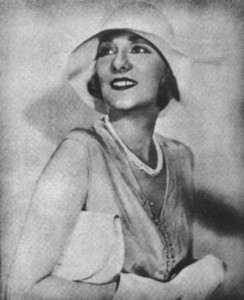 But even if, for a moment, we hold on to both labels, the distinction fails to cover effectively the musical genre and its historical evolution. Indeed, not all blues before 1920, defined by Muir as a turning moment marking a transition from allopathic to homeopathic blues, was of the former nature. A notable exception is some of the work of Marion Harris. She was a popular white singer of early twentieth century vaudeville and Broadway shows, who, in July 1917 recorded “When I Hear That Jazz Band Play”. This song is, by the way, considered to be the first rendition of a jazz song recorded by a woman or at least the first song recorded by a woman that included “Jazz” in the title. Both jazz and blues were on her repertory, and W.C. Handy commented her by saying that she sang blues so well that people sometimes thought that the singer was colored (Redhotjazz.com). In 1920 she recorded “Homesick blues”, of which the lyrics written by Cliff Hess already in 1916, are – in Muir’s definition – clearly homeopathic:
But even if, for a moment, we hold on to both labels, the distinction fails to cover effectively the musical genre and its historical evolution. Indeed, not all blues before 1920, defined by Muir as a turning moment marking a transition from allopathic to homeopathic blues, was of the former nature. A notable exception is some of the work of Marion Harris. She was a popular white singer of early twentieth century vaudeville and Broadway shows, who, in July 1917 recorded “When I Hear That Jazz Band Play”. This song is, by the way, considered to be the first rendition of a jazz song recorded by a woman or at least the first song recorded by a woman that included “Jazz” in the title. Both jazz and blues were on her repertory, and W.C. Handy commented her by saying that she sang blues so well that people sometimes thought that the singer was colored (Redhotjazz.com). In 1920 she recorded “Homesick blues”, of which the lyrics written by Cliff Hess already in 1916, are – in Muir’s definition – clearly homeopathic:
I never will forget the day I left my home,
Just to roam Anywhere, didn’t care,
Had the trav’ling fever on my brain.
I never thought I would regret that awful day,
But now I must confess
I’ve got to step right up and say.
I’ve got the homesickness blues,
Landlord’s waitin’ for the rent, (And I ain’t got a cent, )
Wild weepin’ blues,
Financial embarassment.
Ev’rytime I hear a railroad train (Whistle)
It reminds me of my home again,
And tho’ I try to refuse,
I just can’t shake off those homesickness blues.
I’ve got the homesickness blues,
I never thought that any one could feel so blue,
But It’s true,
When you’re broke people poke up their noses
and just pass you by.
And when you feel as if you’d like to be alone,
You find you haven’t even got a place where you can moan.
More importantly, however, the label ‘homeopathic’ to describe ‘folk blues’ after 1920 fails to acknowledge the popularity of many blues genres which clearly fall out of scope of Muir’s historical and conceptual framework. Such genres as piano-blues, boogie woogie and hokum blues do not fit his historical dichotomy. On a more general level, the equation between “folk blues” and “homeopathic” blues ignores the observation that blues was to a large extent also dance music. It was entertainment. What caused and made the difference between the blues before and after 1920 was primarily the audience and the way the music was marketed. Before 1920, in simplified terms, the popular blues consisted of music basically inspired by the down-to-earth blues sung by African-Americans, but translated and formalized in a way that it would appeal to a largely white audience. This explains both its ‘style’ and the purified lyrical content, stripped of its explicit allusions to physical love and sex. After 1920 it was found more profitable to aim the music exclusively at the African-American market with a separate catalog, the ‘race records’. The readjustment of the market strategy introduced extra degrees of freedom with relation to the form and lyrics of the blues, since the primary consumer was black. Whilst for instance the lyrics of songs meant for a white public were carefully scrutinized to cut rude or objectionable words, less purification was exercised when it came to waxing ‘black’ blues for a ‘black’ public.
In short, Muir’s application of the medical terminology to catalog blues types is an intellectually appealing exercise, but can in no way pretend to offer enough coverage of the diversity of blues, or even start to offer it. Above all, let us not forget that the curative effect of blues by far exceeds the personal level of performer and listener. If we stay in the medical’ terminology, I would therefore rather qualify its curative potential more on the level of a large scale group therapy. The blues is both a product from, and a support to the indestructible will of the African-American populace to survive in the face of the new forms of oppression it faced in the latest part of the nineteenth century. The lyrics and the tunes that helped their ancestors through the dehumanizing era of slavery were adapted by the new generation to cope with the new social structures, which were based on the premise of segregation, i.e. the legal doctrine of Separate but equal, but ultimately served the same aim. The aim of the African-American slave music, and later the blues was no other than a confirmation of self-dignity, a pre-condition for mentally surviving in a system that denies the equal access to even the most basic opportunities to all its citizens. In this sense, blues is indeed curative on the personal level, but it is not less so on the societal level. Any attempt to catch the rich variety, in which this musical expression of the urge to survive manifests itself, in some simple categories is however doomed to fail.
Thus, the blues does thus much more than cure individual blues. Moreover, it could never have a homeopathic nature. After all, it is the very essence of homeopathy that it in no way it can lead to an addiction in the patient, contrary to a lot of allopathic remedies. If you have succeeded in reading this essay this far, then I’m pretty sure that you are addicted to the blues, just as I am.

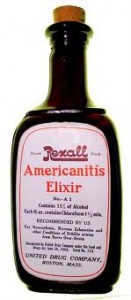
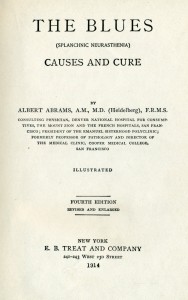
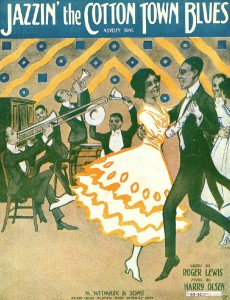
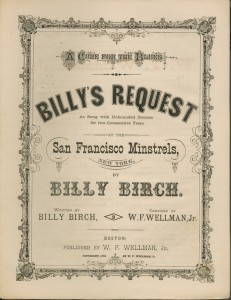

Posting a link to Indy Folk News on Face book. Thanks. Frank
01/17/2012
I Truly want to thank my new Blues Friend on Facebook .. Mr. Erwin Bosman for turning me onto such a Great Blues site ! I don’t believe it gets any better then this. It’s like Peter Muir’s Book .. !
” LONG LOST BLUES ” ~ Pardon my expression … The Holy Grail of The Blues ! What a great gift to give to any avid Bluesman ! This Publication gives anyone one , a great incite into the history of the Blues !
Thank You Erwin !
Jo Jo Taylor
Did you know that around 1000 years ago, the Swedish word for a black person was blåman, i e blueman?